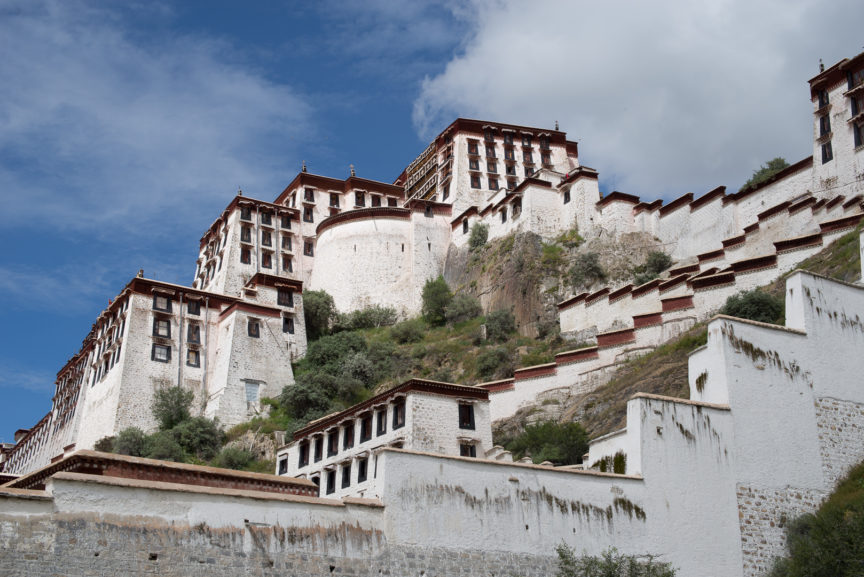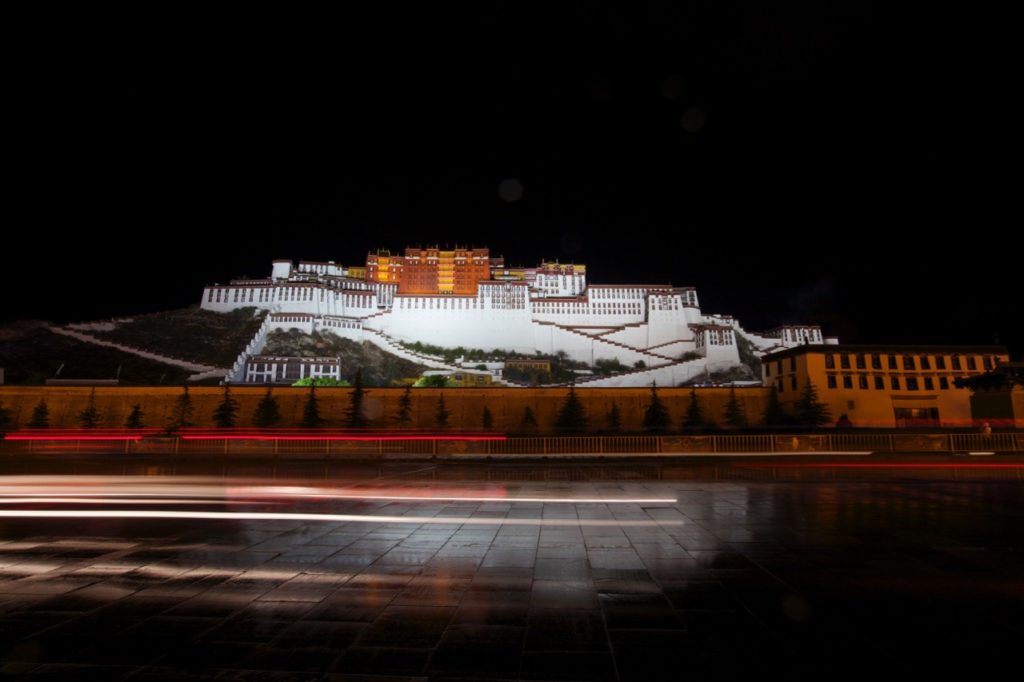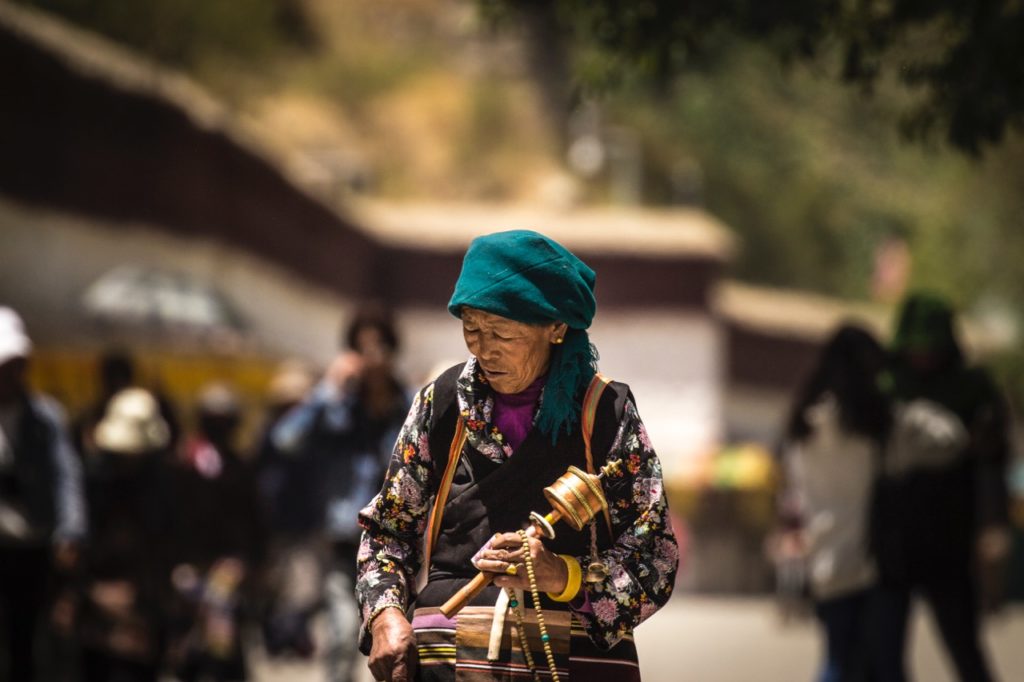Located in Lhasa, Tibet Autonomous Region, one can find the famous Potala Palace( ཕོ་བྲང་པོ་ཏ་ལ། ). As a UNESCO World Heritage Site, this remarkable set of buildings is visited by thousands of tourists daily. “Potala” itself comes from the Hindi name of a mountain in Southern India, while in Sanskrit it means, “The Abode of the Buddha.” Construction of the palace began in 1643 and was completed (the white part of the building) in 1694 under the reign of the 5th Dalai Lama. The Potala was home to each successive Dalai Lama, until the construction of Norbulingka Summer Palace in the late 18th century (also one of Lhasa’s three UNESCO sites), at which point the Potala became their primary winter residence.
The site of the Potala Palace is significant because it is built on top of a cave that King Songtsan Gampo fled to in exile during the 8th century after his father was assassinated Julius-Ceasar-style by his ministers. It was Songtsan Gampo that established Lhasa as the new center of political and religious power in Tibet.
Previous to the Potala Palace, the seat of political and religious authority in Tibet was the Drepung Monastery, also located in Lhasa. The Drepung Monastery is of the Gelugpa sect, which practices celibacy, and an aesthetic lifestyle approach to breaking “attachment” with the world. Every Dalai Lama has been of this sect, also known as the “Yellow Hat Sect.”
The Potala Palace is one of the highest altitude palaces in the world, sitting on Marpo Ri (“Red Hill”) above Lhasa. The palace itself is a construction of over 1000 rooms, and was completed in two parts. The White Palace (Kharpo Podrang) was built first, and was a nine story undertaking that took 3 years. The Red Palace (Marpo Podrang), has a little more of an interesting history. Some believe that the fifth Dalai Lama had the Red Palace built with the intention that it would be his funerary chörten. While that is debated, it is agreed that in 1682, twelve years prior to the completion of the Red Palace, the 5th Dalai Lama died, and the chief minister under him concealed his death until the Palace could be completed to prevent the construction being terminated.
Visiting the Potala Palace
When visiting the Potala Palace, travellers will often rely on their guide to secure them entry. During high season, the Palace has a quota in place to help deal with the number of tourists attempting to see this world renowned site. As a result, the day before you intend to visit, your guide will need to go to an office before noon to reserve your time slot. During the winter months (November to April), you should be able to buy a ticket on the spot.
While photography inside the Potala is prohibited, the outside is fair game. Enjoy the stunning palace grounds, and magnificent architecture that this palace is known for. Climb the massive ambling staircase to enter the front of the palace, but be warned that if you are still adjusting to Lhasa’s altitude, it may take longer than one might expect. Once inside, gaze at the exquisite murals, examine some of the personal effects of the Dalai Lama, and view a number of chapels (amongst so much more), before exiting the rear of the Palace.



